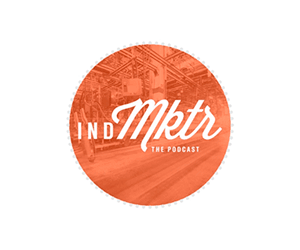Making your search results stand out from others can be a big advantage for B2B industrial websites (and all sites really). Many do this by running paid search engine marketing campaigns.
But there is also an unpaid, straightforward way to improve the look of all of your organic results that can have more wide-reaching benefits than paid search ads. Want to tell search engines what your company name and address are so users see a map when searching? You can use structured data and rich snippets to do this and more with minimal effort.
Rich Snippets enhance your results on search pages by including product reviews, maps, addresses, and more that are relevant to your results. With your results more comprehensive and visually prominent, users will be more likely to click them. As of yet there is no conclusive evidence that structured data markup will improve your search rankings, but it will certainly make your results more appealing to users.
What Is Structured Data?
Structured data is a system for labeling and identifying content on webpages. The HTML of the page uses a special markup to let search engines know what type of content is on the page. Search engines use this structured data markup to refine search results, filter with greater accuracy, and improve the ways results are displayed.
There are many types of content that can be marked up with structured data. Products, movies, books, recipes, stores, landmarks — the list goes on and new types are added every now and then.
What Are Rich Snippets?
Search engines will use your structured data markup to improve the appearance of your search listings — creating what is termed a “rich snippet.” Snippets are bits of text that appear under search results and are meant to give users an idea of what’s on the page that’s been retrieved and why it’s relevant to their search. By doing so, rich snippets make search listings more than just a mass of boring text and aim to increase click-through rates.
Here are a few examples of rich snippets that draw on structured data to augment search results that are relevant to industrial businesses:
Products
Events

With rich snippets, event search results can include the time and place of an event as well as a link to a map of the location.
Local Businesses

By using rich snippets, a local business search result can include the address below the result, the hours of operation, and an accompanying map.
Schema.org
Schema.org is a collaborative project undertaken by Google, Microsoft, and Yahoo! to improve the web by creating a structured data markup system supported by major search engines. Schema.org provides a collection of schemas or models that define structured data in the microdata format. There are many schemas to choose from with new ones added frequently. If you’re thinking about using structured data on your site, Schema.org is the place to go to for information on how to set it up.
Implementing Structured Data Markup
There are several structured data formats — microdata, microformats, and RDFa. Since Google recommends microdata, we’ll focus on that format.
You should be comfortable writing HTML if you plan implement structured data markup. You do not need to be an expert, though, as the edits are simple.
To use structured data, the design/appearance of your site does not need to change. See the examples below and then follow the documentation at Schema.org for more detailed instructions. You can also get started with Google’s Structured Data Markup Helper.
The markup of microdata consists of three elements: itemscope, itemtype and itemprops. The itemscope attribute encloses or “contains” information about the item. By adding itemscope to your HTML, you are specifying that the content within that element is about a particular item.
The itemtype element identifies the type of content. Use this attribute immediately after the itemscope.
<div itemscope itemtype="http://schema.org/Organization"> <span itemprop="name"> Wearwell, Inc.</span> </div>
In this example, the itemscope informs search engines that the item contained in the div element is an itemtype “Organization”. Below is an expanded version of this example that further defines the same organization noted above (“Wearwell, Inc.”) by adding a number of different itemprops to describe its physical address using the established U.S. Postal Service format.
<div itemscope itemtype="http://schema.org/Organization"> <span itemprop="name"> Wearwell, Inc</span> <span itemprop="address" itemscope itemtype="http://schema.org/PostalAddress">North America Headquarters<br> <span itemprop="streetAddress">199 Threet Industrial Road</span><br> <span itemprop="addressLocality">Smyrna, Tennessee</span> <span itemprop="postalCode">37167</span> </span> </div>
When working on implementing structured data markup, you will need to test things out. Google offers a nice tool for testing your implementation of microdata.
Conclusion
With the big three search engines (Google, Bing, and Yahoo!) collaborating on Schema.org and the standards for structured data markup, we’ll be seeing a lot more structured data in the future. Structured data markup allows search engines to interpret content more reliably and generate richer results for users.
If you haven’t already, take the opportunity to implement structured data markup on your site and benefit from improved search result click-through rates. Chances are your competition is already doing so.
If you have any questions of need any help getting started with structured data markup, please leave a comment or contact us at Industrial Strength Marketing.





